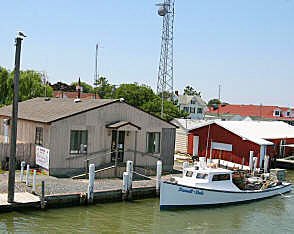
Dr. Jana Rehak is an anthropologist, photographer, and researcher at UMBC’s Center on Aging. Since 2014, she has performed ethnographic research on the secluded Smith Island, becoming an embedded member of the island’s community. Her recent film Family Frames: The Pictorial History of Smith Island and articles explore the community’s response to its aging population and changing environment, and its use of storytelling in passing along its heritage to future generations.
Dr. Rehak’s ethnographic work on Smith Island focuses on two key themes: the changing environment (seen in coastal erosion), and aging community. In her work on the island, she dives into “aging in place,” and what it means for a community and individuals to age in a place that is changing economically and ecologically. She first visited Smith Island in 1995 when she was getting to know Maryland. As a photographer, she was interested in the landscape and images of the islands off of Maryland’s Eastern Shore, and as an anthropologist, she was interested in the secluded communities inhabit them. She arranged a day visit to Smith Island. When interviewed about her work, she told a story of a local couple native to Smith Island who took them on a fishing boat to get to the island when there was no ferry running. When Dr. Rehak discovered that there was no boat back to the mainland, and no hotels or B&Bs open, the couple opened their home to her, showed incredible hospitality, contradicting the stereotype of those in secluded communities being wary of outsiders.
She returned in in Smith Island in 2013 for a family vacation, and reconnected with the local couple. They introduced her to other members of the Smith Island community. Since then, Dr. Rehak has spent multiple summers there, and become a more active part of the community – taking part in annual events, cooking and cleaning with them for festivities.
After Hurricane Sandy the organization Smith Island United was established to help focus efforts to repair damage from the hurricane, and shape the island’s economic future, with a focus on tourism. As part of a large effort on the island to create a heritage archive, Dr. Rehak decided to document and share their culture through writing, film, and photographs. She then discovered, in talking with community members, the importance of family albums. Smith Island has strong oral tradition, and photo albums help facilitate powerful storytelling that helps keep the traditions and history of the island alive. To dive deeper, she worked with a local chronologist/archivist, and discovered that the photos found in family albums told stories about the whole community demonstrating web of connections across families: kinship seen in overlapping albums.
In 2017, Somerset County Library, Smith Island Branch, became a partner in her project of documenting the family albums through filmed interviews. By having Smith Islanders “read photographs” and describe the pictures, narratives opened into news stories about the changing land, experiences, and local expertise on how to manage that environmental change.
She organized a community viewing of the film on Smith Island. Locals, distant relatives, and mainlanders joined- and many people found old connections to the island, resulting in a robust event of storytelling. Following the viewing, images from the featured family albums started to spread on facebook. The internet provided a new connection between the island and the outside, and symbolized the transition of albums from material object to digital.
As Dr. Rehak embedded in the Smith Island community, she discovered that locals have a unique knowledge of place, especially the island, which holds special meaning to their community. They have a sustainable relationship with the land and the ocean, which has been the island’s livelihood for so long. As Dr. Rehak suggests, “Survival depends on the intensive knowledge of their ecology.”